
Turnout to two-hour march through downtown blew away expectations.
The USA has experienced widespread protests the likes of which haven’t been seen since the 60s, and at the centre of it all is the Black Lives Matter movement, which demands an end to the longstanding systematic discrimination of black people in the U.S. and the rest of the world.
Japan too, is no stranger to racism. It may not be as overt as repeated incidents of police brutality, but I can even remember talking to an employee of a major English conversation school chain whose job it was to Photoshop images of black people in textbooks, literally cutting off their heads and replacing them with those of white people.
So, it certainly wasn’t incomprehensible that Black Lives Matter Kansai was formed and eventually organized a march on 7 June both as a show of support for the ongoing movement in the US and to raise awareness of issues going on in Japan. Days before the march, the event got a big signal boost in the form of tennis great Naomi Osaka.
https://twitter.com/naomiosaka/status/1268376322373378048Still, with Japan not exactly being a hotbed of racial tension and the ever-present threat of COVID-19, the turnout was very uncertain at the time.
I went down to the event about a half an hour before the designated march time. Already there was a lot of activity, mainly volunteers and the media getting set up and a handful of marchers.
As the start time drew nearer, the crowd quickly swelled…
…and swelled…
…and swelled.
The march was to start off on the side of the river with all of the participants squeezed along its bank. Unfortunately this made it really hard to gauge the crowd’s size.
Police were present, but this being a government-sanctioned march, they were there to provide an escort along the busy streets of downtown Osaka. Other slightly more armed cops were also hanging around the periphery, but the overall vibe was very relaxed.
The march started by walking across Osaka City Hall. With all the participants chanting “Black lives matter,” and “No more racism.”
Many carried signs with an array of slogans both in English and Japanese. The woman at the head of the march was also fluently bilingual and shouted slogans and instructions to the crowd in both languages the whole time.
The march then went across the front of the U.S. Embassy. Prior to the event, the U.S. Consul General in Osaka, Karen Kelly, tweeted her support of the march. However, at the time, no one except a line of Japanese police officers was there, probably because it was a Sunday.
Next, they reached a large intersection with a pedestrian bridge which gave me a good chance to get high and finally see how many people were there.
It was still hard to say, but with the line of marchers stretching down the block I would have guessed about 500 were there.
From there the group traveled through the busy business area of Umeda towards Nishi-Umeda park. By this time, their chants changed to “Me too,” and “Say her name,” in reference to American Breonna Taylor who was shot eight times by police officers while in bed.
Everyone in the march was wearing a mask and some held umbrellas, both to help social distancing and block the scorching sunlight that afternoon. Temperatures were over 30 degrees Celsius (86 degrees Fahrenheit) and there wasn’t a single cloud in the sky.
Still, spirits were very high as everyone neared their destination.
Once there, they let out a hearty round of applause. A few people gave speeches and everyone in the group silently kneeled for eight minutes and 46 seconds, the time that George Floyd’s neck was under the knee of a Minneapolis police officer when he died.
It was very moving but I couldn’t help but think the size of the crowd was rather small at this point. When the moment of silence was finished everyone proceeded to the centre of the park and I wondered if most people had given up from the relentless heat.
Just then, I heard someone playing Bob Marley on guitar and another wave of marchers arrived. I knew that due to the size, the participants were split into groups, but I had no idea they were staggered by about ten minutes each.
As the second group was finishing their speeches and moment of silence, another wave chanting “Black lives matter,” arrived, and then another after that. In leaps and bounds the park began to fill with marchers.
By the end, the applause of the crowd was thunderous and the atmosphere was overwhelmingly positive. Looking around, people of all skin colors could be seen, all supporting each other in the name of protecting black lives and black rights.
“I look out and I see all you people, with the same mind and the same heart and a love of people,” said a member of Black Lives Kansai standing in the center of the crowd, “And I love you for that… Never forget: Do not allow injustice to be ignored. See something, say something. And speak for those who can’t speak for themselves. Walk for those who cannot walk for themselves. And give voices to the voiceless.”
Osaka’s permission for the march included a strict deadline, so everyone was asked to disperse soon, and did so in smaller groups in order to aid social distancing as much as they could given such a large turnout.
But before that, all the marchers chanted one more time in unison “Black lives matter!” The sound of so many people together was formidable but inspiring.
In the end, over 2,000 people were said to have taken part on this hot afternoon in downtown Osaka. Although in the epicenter of the Black Lives Matter movement a lot of anger and frustration could be seen, as time and distances grows that anger seems to be evolving into more positive feelings, and hopefully positive change soon.
Prior to and after the march, there was a lot of concerns about it triggering coronavirus clusters. That danger certainly can’t be dismissed, but aside from the march, there were still hundreds of people in the street going about their daily lives. As far as I could see, every marcher was masked, but the same couldn’t be said for the bystanders at that time.
People are clearly going out in Osaka, and that’s not necessarily a bad thing either as we inch back to some form of normal life. Whatever reason it is for the individual when going outside, it’s always best to do it for something that matters.
Photos © SoraNews24
● Want to hear about SoraNews24’s latest articles as soon as they’re published? Follow us on Facebook and Twitter!

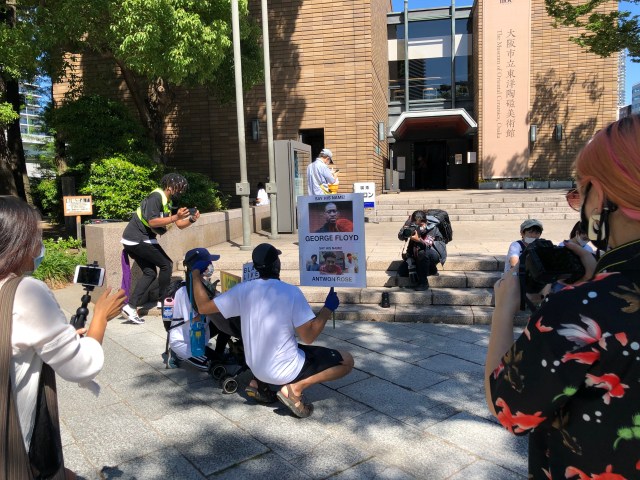
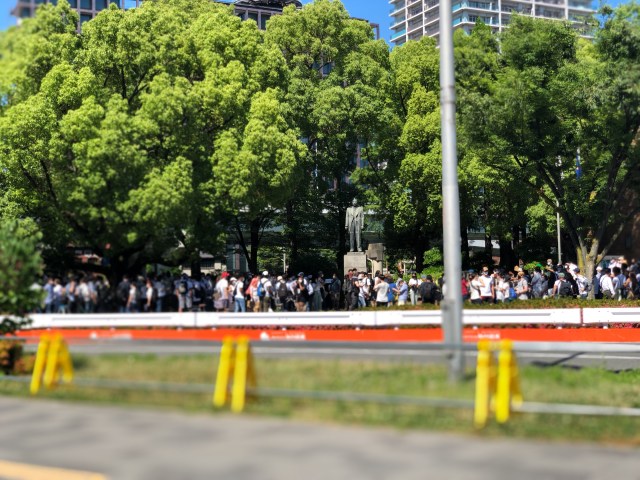
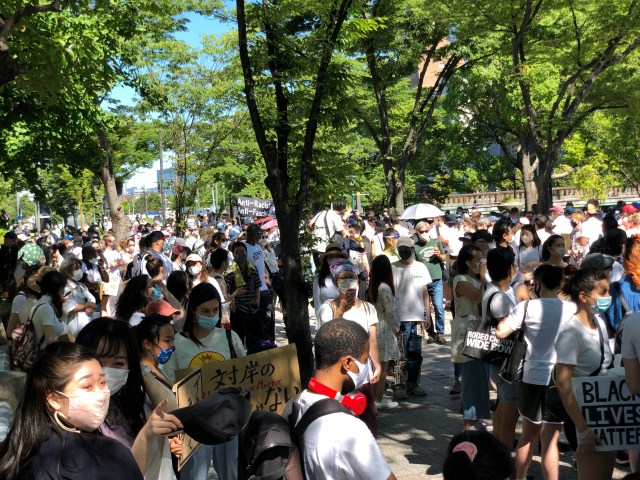
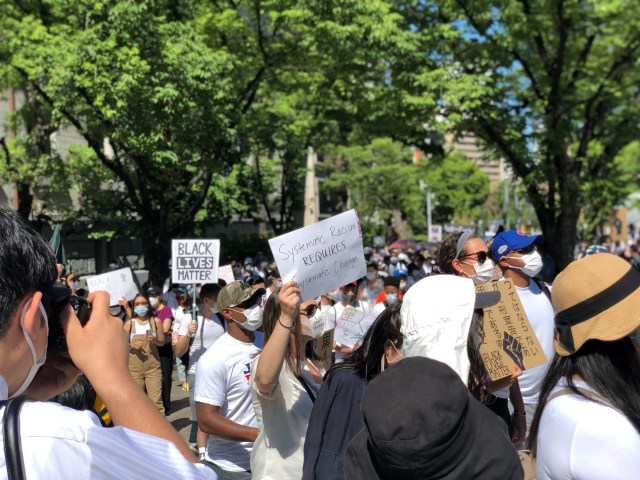
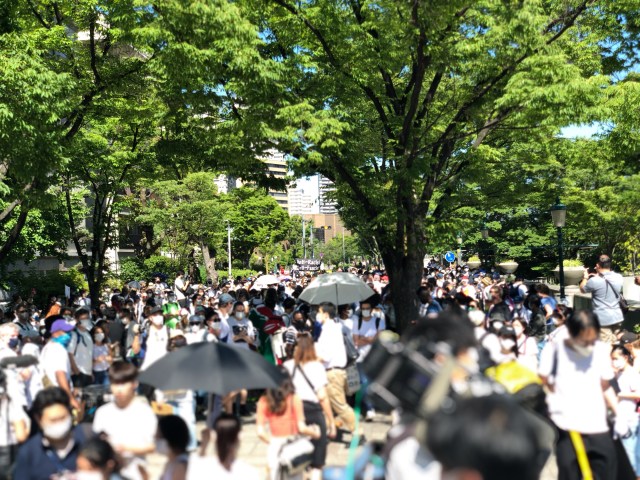
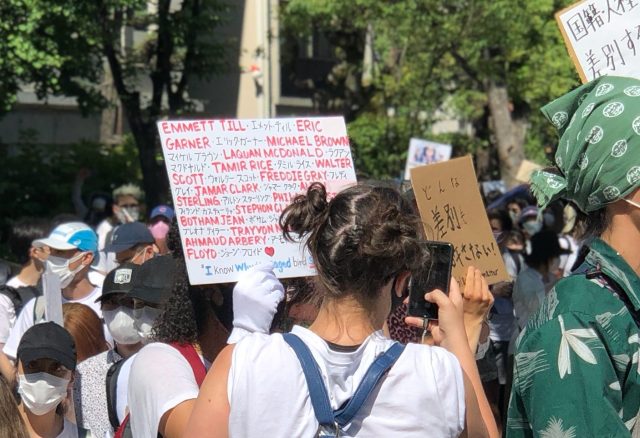
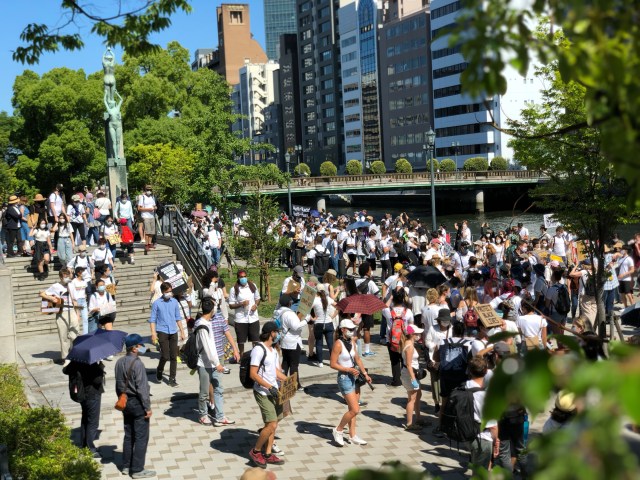
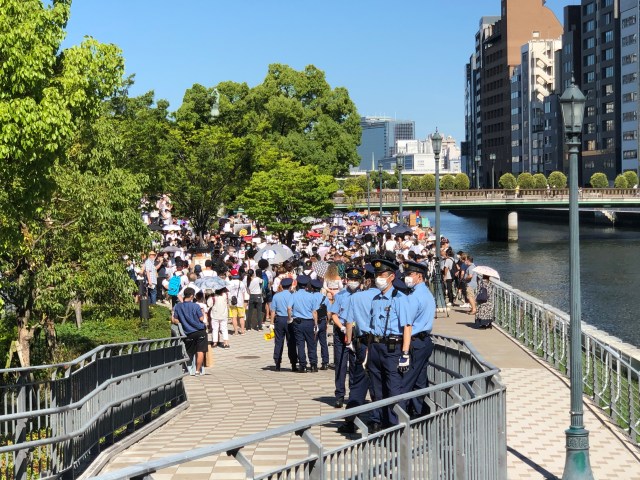
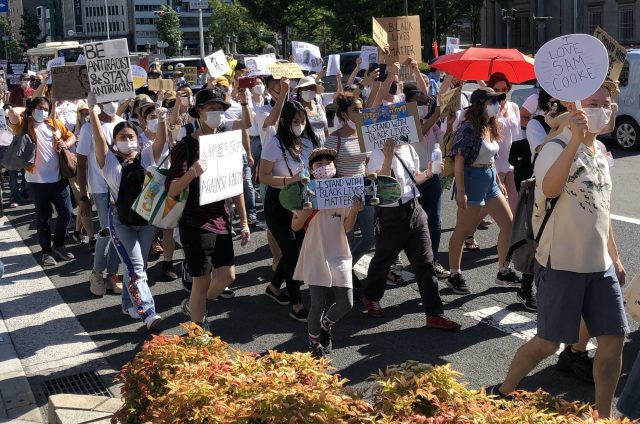
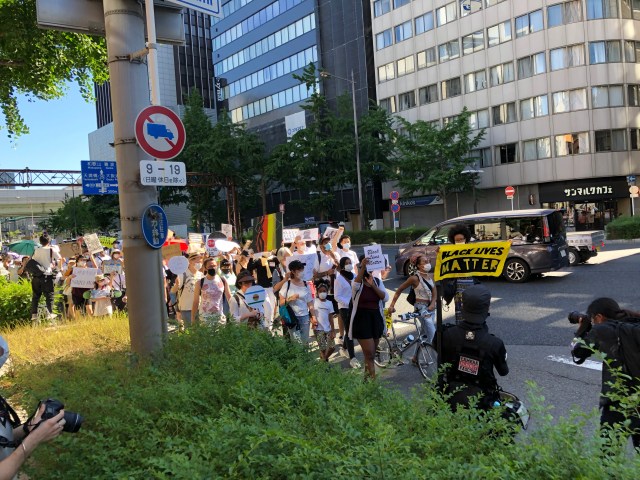
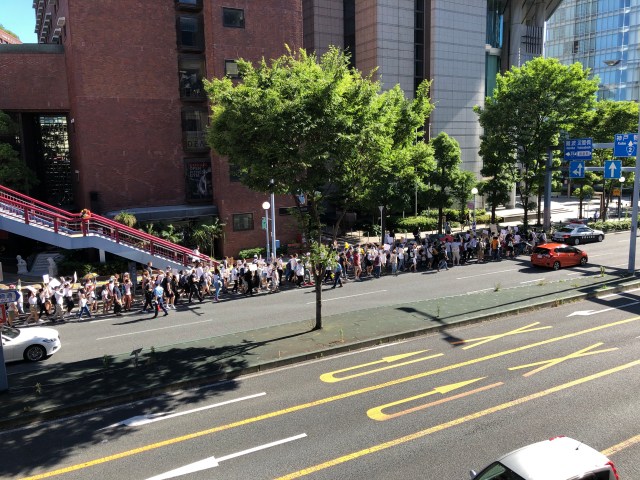
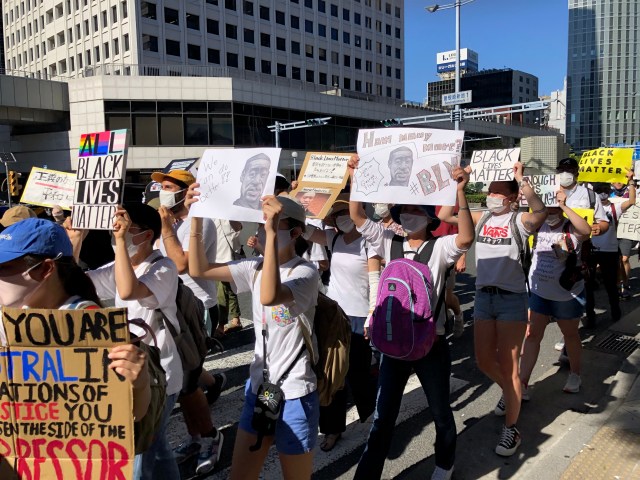
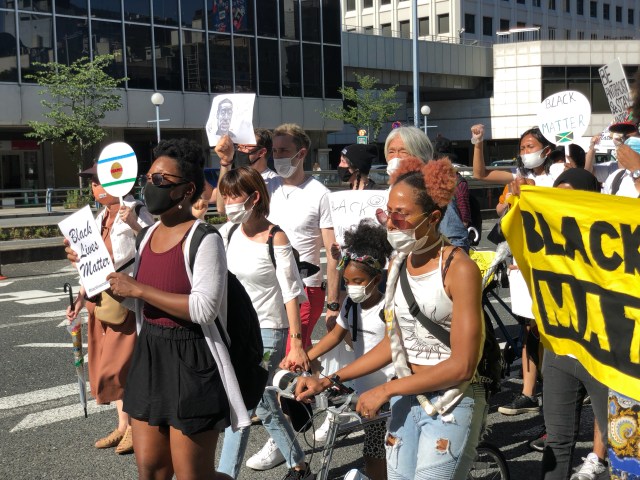
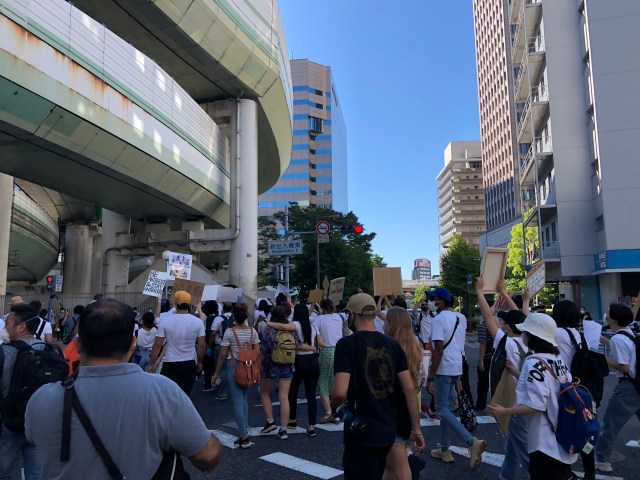
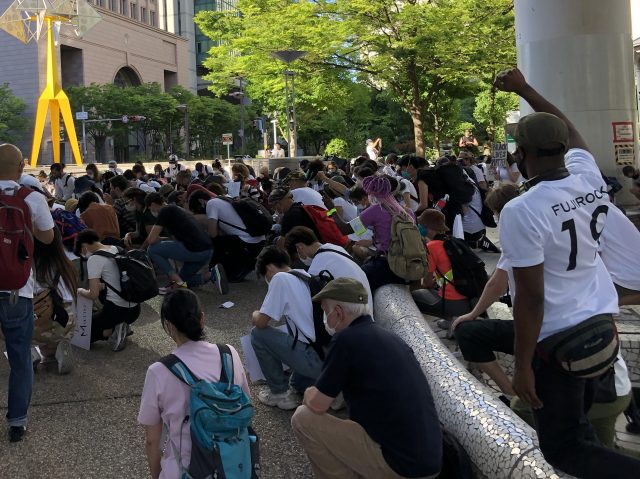
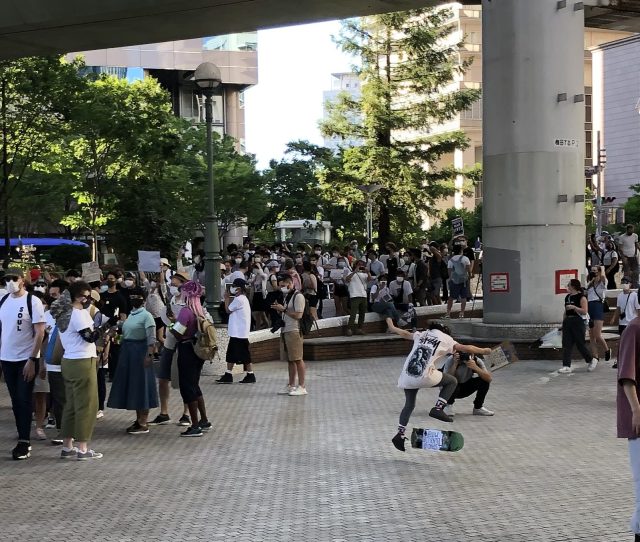
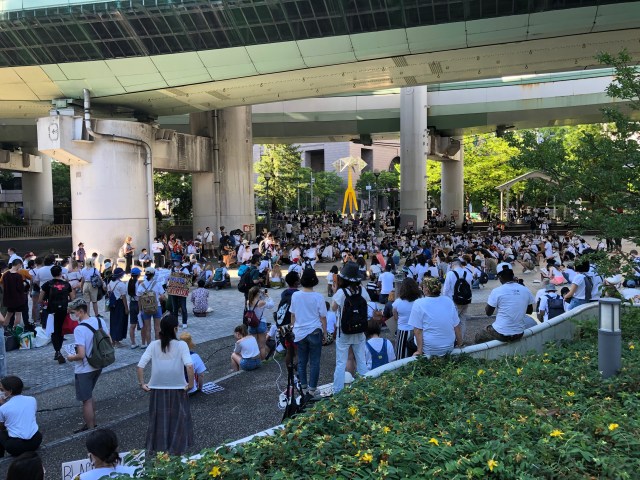
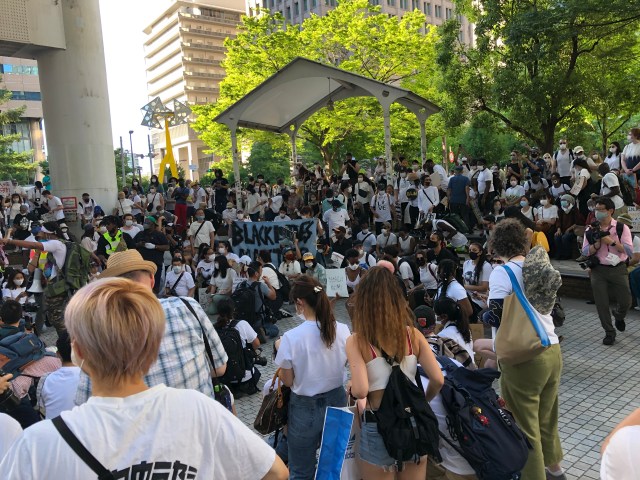
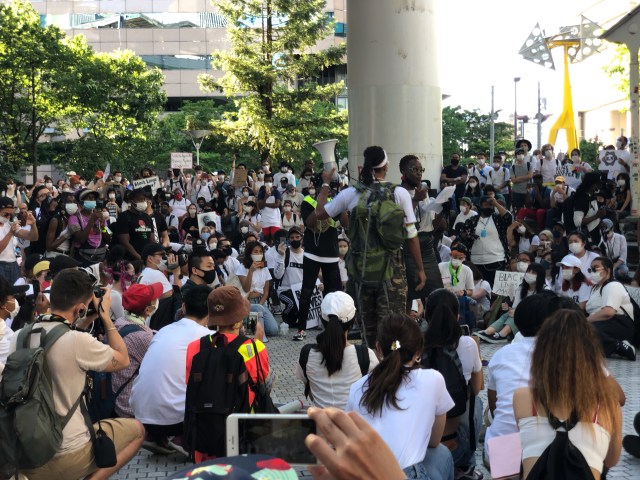
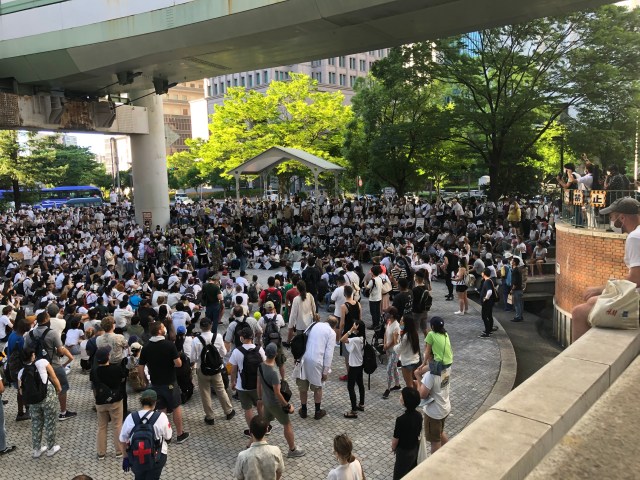
 30-minute protest march held in downtown Tokyo by dateless men opposing Christmas Eve dates
30-minute protest march held in downtown Tokyo by dateless men opposing Christmas Eve dates Pokémon Go at the American Embassy in Japan: A Police Officer Appears!
Pokémon Go at the American Embassy in Japan: A Police Officer Appears! Japan’s Revolutionary Alliance of Unpopular People holds anti-Christmas protest in Tokyo【Pics】
Japan’s Revolutionary Alliance of Unpopular People holds anti-Christmas protest in Tokyo【Pics】  Knife-wielding man at Shinjuku Station arrested by Tokyo police
Knife-wielding man at Shinjuku Station arrested by Tokyo police Cute d’état! Thousands of ducks take to the streets in Thailand
Cute d’état! Thousands of ducks take to the streets in Thailand Foreigner’s request for help in Tokyo makes us sad for the state of society
Foreigner’s request for help in Tokyo makes us sad for the state of society Japanese city loses residents’ personal data, which was on paper being transported on a windy day
Japanese city loses residents’ personal data, which was on paper being transported on a windy day Osaka governor suggests lowering voting age to 0 to curb population decline
Osaka governor suggests lowering voting age to 0 to curb population decline Harajuku Station’s beautiful old wooden building is set to return, with a new complex around it
Harajuku Station’s beautiful old wooden building is set to return, with a new complex around it Historical figures get manga makeovers from artists of Spy x Family, My Hero Academia and more
Historical figures get manga makeovers from artists of Spy x Family, My Hero Academia and more Akihabara pop-up shop sells goods made by Japanese prison inmates
Akihabara pop-up shop sells goods made by Japanese prison inmates Mt. Koya planning to instate visitor’s tax to cope with huge tourist numbers
Mt. Koya planning to instate visitor’s tax to cope with huge tourist numbers Ghibli Park now selling “Grilled Frogs” from food cart in Valley of Witches
Ghibli Park now selling “Grilled Frogs” from food cart in Valley of Witches Suntory x Super Mario collaboration creates a clever way to transform into Mario【Videos】
Suntory x Super Mario collaboration creates a clever way to transform into Mario【Videos】 Grand Hyatt Tokyo teaming up with artist Takashi Murakami for adorable take-out afternoon tea set
Grand Hyatt Tokyo teaming up with artist Takashi Murakami for adorable take-out afternoon tea set McDonald’s new Happy Meals offer up cute and practical Sanrio lifestyle goods
McDonald’s new Happy Meals offer up cute and practical Sanrio lifestyle goods Japanese ramen restaurants under pressure from new yen banknotes
Japanese ramen restaurants under pressure from new yen banknotes French Fries Bread in Tokyo’s Shibuya becomes a hit on social media
French Fries Bread in Tokyo’s Shibuya becomes a hit on social media Studio Ghibli releases new action figures featuring Nausicaä of the Valley of the Wind characters
Studio Ghibli releases new action figures featuring Nausicaä of the Valley of the Wind characters New private rooms on Tokaido Shinkansen change the way we travel from Tokyo to Kyoto
New private rooms on Tokaido Shinkansen change the way we travel from Tokyo to Kyoto Red light district sushi restaurant in Tokyo shows us just how wrong we were about it
Red light district sushi restaurant in Tokyo shows us just how wrong we were about it Tokyo Tsukiji fish market site to be redeveloped with 50,000-seat stadium, hotel, shopping center
Tokyo Tsukiji fish market site to be redeveloped with 50,000-seat stadium, hotel, shopping center All-you-can-drink Starbucks and amazing views part of Tokyo’s new 170 meter-high sky lounge
All-you-can-drink Starbucks and amazing views part of Tokyo’s new 170 meter-high sky lounge Beautiful Ghibli sealing wax kits let you create accessories and elegant letter decorations【Pics】
Beautiful Ghibli sealing wax kits let you create accessories and elegant letter decorations【Pics】 Studio Ghibli releases Kiki’s Delivery Service chocolate cake pouches in Japan
Studio Ghibli releases Kiki’s Delivery Service chocolate cake pouches in Japan New definition of “Japanese whiskey” goes into effect to prevent fakes from fooling overseas buyers
New definition of “Japanese whiskey” goes into effect to prevent fakes from fooling overseas buyers Our Japanese reporter visits Costco in the U.S., finds super American and very Japanese things
Our Japanese reporter visits Costco in the U.S., finds super American and very Japanese things Studio Ghibli unveils Mother’s Day gift set that captures the love in My Neighbour Totoro
Studio Ghibli unveils Mother’s Day gift set that captures the love in My Neighbour Totoro More foreign tourists than ever before in history visited Japan last month
More foreign tourists than ever before in history visited Japan last month New Pokémon cakes let you eat your way through Pikachu and all the Eevee evolutions
New Pokémon cakes let you eat your way through Pikachu and all the Eevee evolutions Sales of Japan’s most convenient train ticket/shopping payment cards suspended indefinitely
Sales of Japan’s most convenient train ticket/shopping payment cards suspended indefinitely Sold-out Studio Ghibli desktop humidifiers are back so Totoro can help you through the dry season
Sold-out Studio Ghibli desktop humidifiers are back so Totoro can help you through the dry season Japanese government to make first change to romanization spelling rules since the 1950s
Japanese government to make first change to romanization spelling rules since the 1950s Ghibli founders Toshio Suzuki and Hayao Miyazaki contribute to Japanese whisky Totoro label design
Ghibli founders Toshio Suzuki and Hayao Miyazaki contribute to Japanese whisky Totoro label design Doraemon found buried at sea as scene from 1993 anime becomes real life【Photos】
Doraemon found buried at sea as scene from 1993 anime becomes real life【Photos】 Tokyo’s most famous Starbucks is closed
Tokyo’s most famous Starbucks is closed One Piece characters’ nationalities revealed, but fans have mixed opinions
One Piece characters’ nationalities revealed, but fans have mixed opinions We asked a Uniqlo employee what four things we should buy and their suggestions didn’t disappoint
We asked a Uniqlo employee what four things we should buy and their suggestions didn’t disappoint Princesses, fruits, and blacksmiths: Study reveals the 30 most unusual family names in Japan
Princesses, fruits, and blacksmiths: Study reveals the 30 most unusual family names in Japan Cup Noodle in hot water once again for unflattering Grand Slam support ad
Cup Noodle in hot water once again for unflattering Grand Slam support ad Black Lives Matter protests receive support from Japanese mascot Chiitan【Video】
Black Lives Matter protests receive support from Japanese mascot Chiitan【Video】 Yamagata police tell residents not to worry about knife-wielding man roaming the streets
Yamagata police tell residents not to worry about knife-wielding man roaming the streets Tokyo store that only sells black shirts sheds light on why it’s opening mid-pandemic
Tokyo store that only sells black shirts sheds light on why it’s opening mid-pandemic “Business Nail” – the latest trend among young Japanese businessmen looking to get ahead
“Business Nail” – the latest trend among young Japanese businessmen looking to get ahead Thousands of anime fans gather for public screenings of new Dragon Ball episode in Latin America
Thousands of anime fans gather for public screenings of new Dragon Ball episode in Latin America Anti-Valentine’s Day protest march held in Tokyo by Revolutionary Alliance of Unpopular Men【Vid】
Anti-Valentine’s Day protest march held in Tokyo by Revolutionary Alliance of Unpopular Men【Vid】 Sakura season officially declared in Tokyo, earliest start to hanami on record
Sakura season officially declared in Tokyo, earliest start to hanami on record 45-year-old man arrested for writing “Pyewwww Poop” on public toilet seat
45-year-old man arrested for writing “Pyewwww Poop” on public toilet seat Japanese soccer team fined 20 million yen because fans’ cheering violated COVID-19 guidelines
Japanese soccer team fined 20 million yen because fans’ cheering violated COVID-19 guidelines Spend a shift working in a terrible, soul-crushing Japanese company at this “special” Tokyo event
Spend a shift working in a terrible, soul-crushing Japanese company at this “special” Tokyo event Starbucks Japan’s new Frappuccino is like…the U.S. in a cup
Starbucks Japan’s new Frappuccino is like…the U.S. in a cup Japanese youths anger police by sitting at kotatsu table at busy Kyoto intersection【Video】
Japanese youths anger police by sitting at kotatsu table at busy Kyoto intersection【Video】 What’s it like to attend an idol concert where they’re singing lyrics that you wrote? Complicated
What’s it like to attend an idol concert where they’re singing lyrics that you wrote? Complicated Amina, Japan’s first African-American idol, searches for stardom【Video】
Amina, Japan’s first African-American idol, searches for stardom【Video】 Man with homemade firebomb detained by police outside U.S. embassy in Tokyo
Man with homemade firebomb detained by police outside U.S. embassy in Tokyo
Leave a Reply